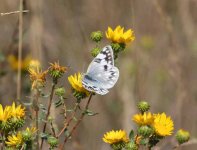I know this topic has probably allready been discussed but it did not come on on my search and I can't find it anywhere myself but..
My new camera has the option to record in RAW (never had the option) and I just tried it with a random picture of my daughter's robot, and was able to get the image up and kind of tweaked in the software that came with the camera (Pentax Photo Lab) and I was wondering (as i am clueles here with all the digital/computer stuff) with my birding photography should I experiment with RAW? And what are the pros and cons with RAW and JPEG? I will say that I have been having a bit of trouble with glares from my high whites (Especially my egrets) and a fwe issues with purple fringe that I have been trying to work out with my settings and white balance (the AWB seems to be a little off for bird photography when the sky is behind the subject) and I was thinking maybe recording in RAW will give me more of an oprotunity to fix my issues (not to mention I could use a grand or so to buy a really good lense, but that is a whole different problem that I don't think you all can help me with... unless someone is a multibillionare and would love to through me a couple of million so I can live a charmed life )
)
My new camera has the option to record in RAW (never had the option) and I just tried it with a random picture of my daughter's robot, and was able to get the image up and kind of tweaked in the software that came with the camera (Pentax Photo Lab) and I was wondering (as i am clueles here with all the digital/computer stuff) with my birding photography should I experiment with RAW? And what are the pros and cons with RAW and JPEG? I will say that I have been having a bit of trouble with glares from my high whites (Especially my egrets) and a fwe issues with purple fringe that I have been trying to work out with my settings and white balance (the AWB seems to be a little off for bird photography when the sky is behind the subject) and I was thinking maybe recording in RAW will give me more of an oprotunity to fix my issues (not to mention I could use a grand or so to buy a really good lense, but that is a whole different problem that I don't think you all can help me with... unless someone is a multibillionare and would love to through me a couple of million so I can live a charmed life





